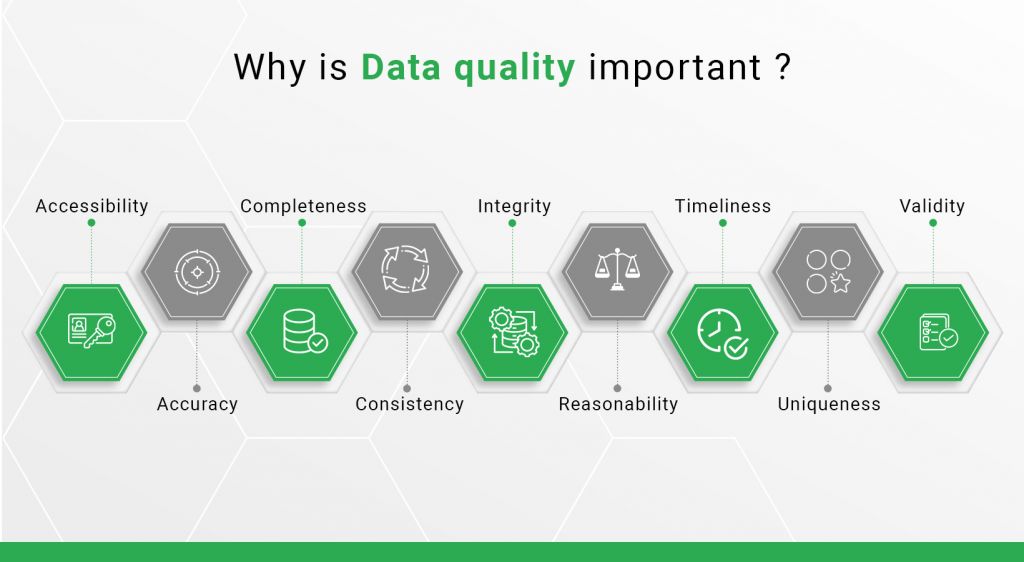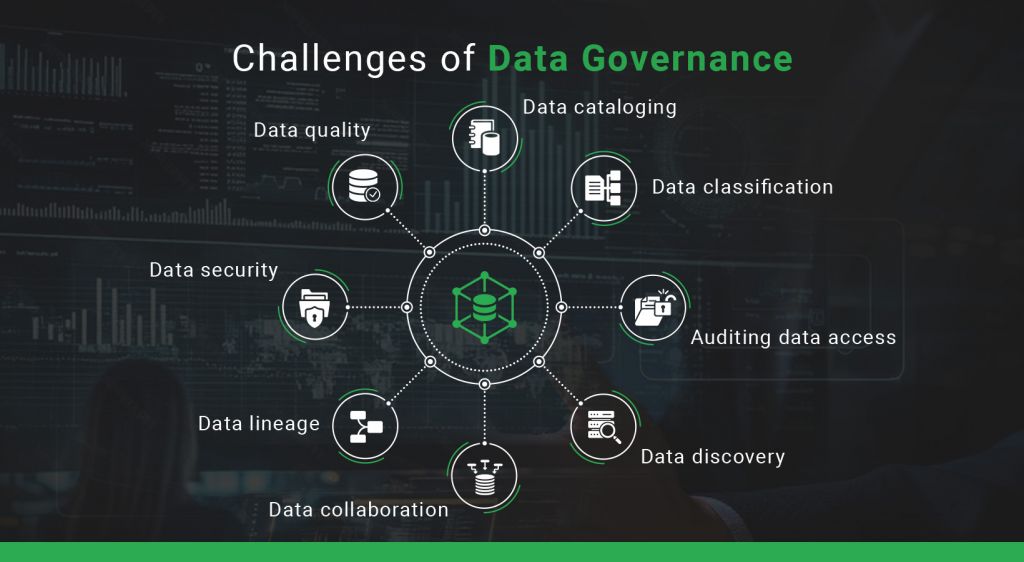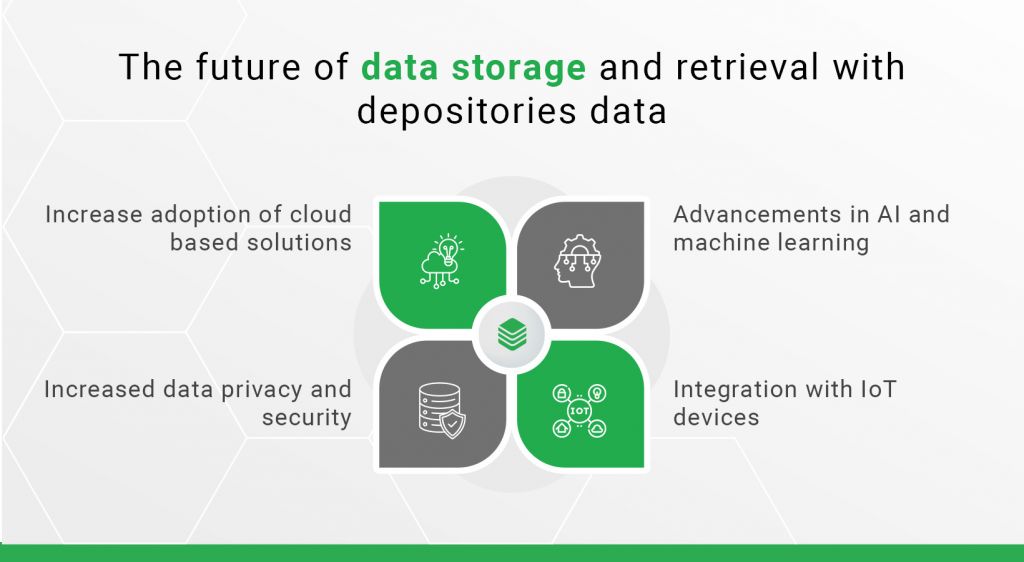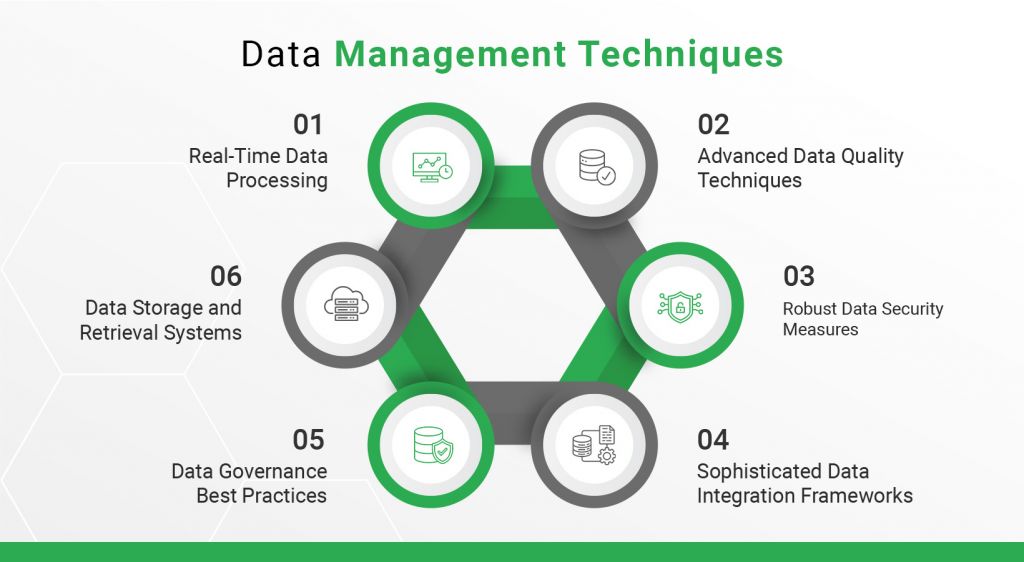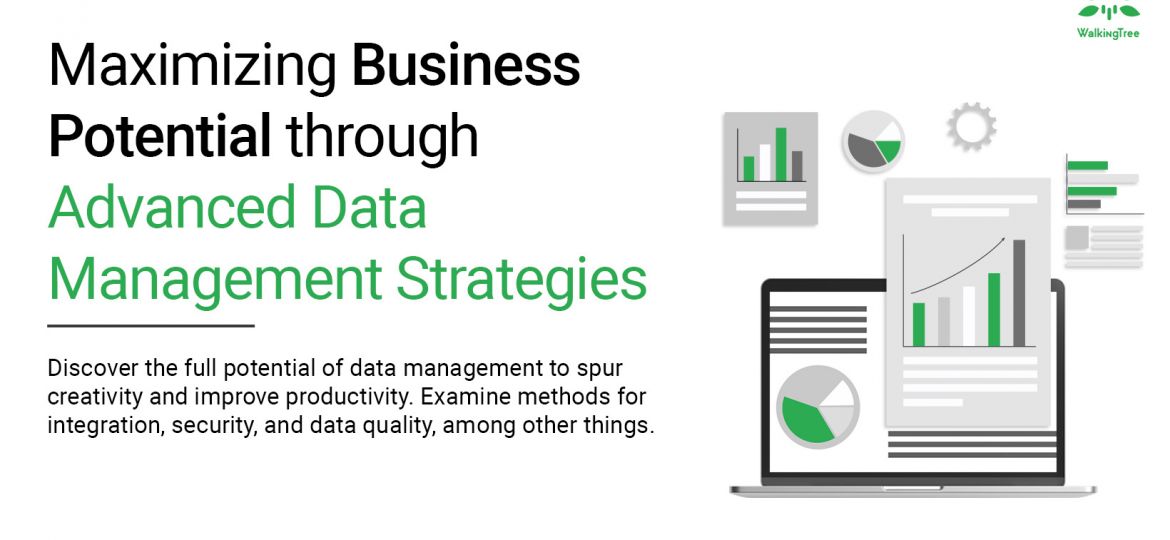
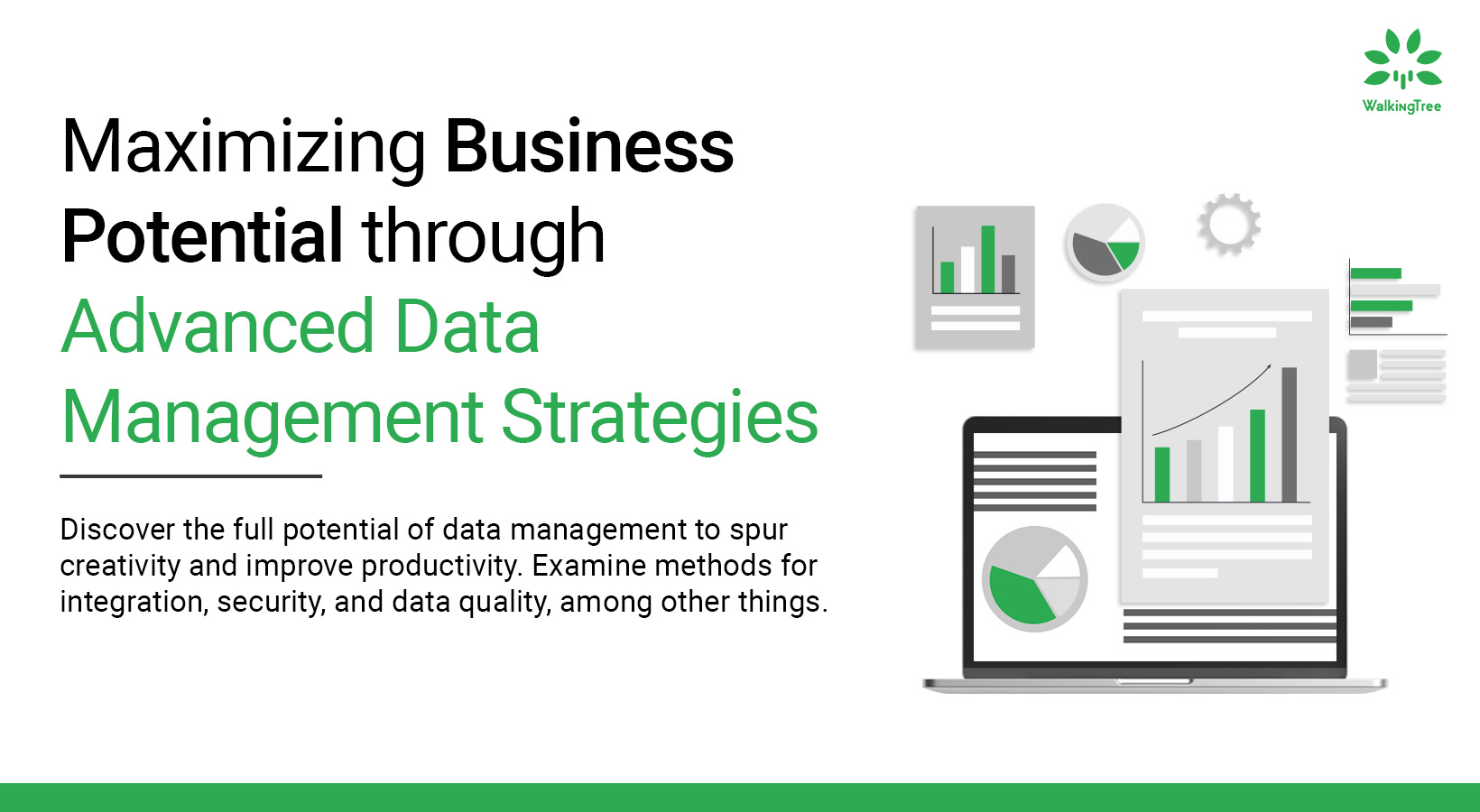
Data management is an important discipline that includes all data gathering, storage, organization, maintenance, and use elements. It’s easier to compare managing data to conducting a symphony as both require smooth collaboration across all the various components. Making the most of the knowledge your firm possesses requires strategic planning and the use of the right tools.
The process of acknowledging data as a valuable resource and optimizing its utilization while guaranteeing data security, correctness, consistency, and accessibility is its definition. For businesses whose data they wish to use for strategic planning, effective operations, and well-informed decision-making, this section is crucial.
In our upcoming blog series, we explore every aspect of data management in detail. We cover everything, from guaranteeing strong data security to upholding flawless data quality, accomplishing seamless data integration, putting in place efficient data governance, and maximizing data storage and retrieval.
We take a thorough look at the complexities of the Data Management process in this comprehensive blog. We examine why data management is not just crucial, but also essential. And understand how data management plays a critical role in fostering innovation and commercial success.
|Understanding The Role of Data Management
At the core of effective data management, it encompasses the comprehensive process of collecting, storing and organizing. Additionally, it utilizes data in a manner that ensures efficiency, security, and cost-effectiveness. Data management serves as the invisible force organizing this process, ensuring seamless integration and optimal utilization of data assets.
When it comes to the technical perspective on data management practices, it goes beyond simple archiving. It encompasses the processing, analysis, and interpretation of data in real time. This comes at the cost of identifying abnormalities, reducing risks, and streamlining operational procedures.
Where Does Data Quality Come in?
Data quality affects every component of an organization’s operations and is essential to sound decision-making. Organizations must employ data that is high-quality, accurate, full, consistent, and timely when making strategic decisions.
However, low-quality data can lead to inaccurate analyses, misguided strategies, and significant financial losses. By giving data quality first priority, organizations can ensure the dependability and usability of their data assets. This necessitates putting in place strong data governance frameworks, standardized data cleaning procedures, and sophisticated validation methods.
In the end, spending money on high-quality data improves an organization’s capacity to optimize processes, react to changing market conditions, and realize long-term gains.
Strengthening Data Security Against Cyber Threats
In a time when cyberattacks are more frequent and complex, increasing data security has become essential for enterprises. Sensitive data needs to be safeguarded using a multi-layered security approach to fend off breaches, unauthorized access, and other threats. To fend off new threats, this entails implementing stringent access controls, employing cutting-edge encryption techniques, and routinely upgrading security protocols.
Furthermore, reducing human error—which frequently results in security vulnerabilities—can be achieved by implementing regular training programs and fostering an awareness of cybersecurity among staff members. Organizations may safeguard their data integrity, maintain regulatory compliance, and maintain consumer trust by anticipating potential threats and constantly improving security procedures. In addition to safeguarding priceless assets, effective data security increases an organization’s resistance to cyberattacks in general.
Integrating Data for Better Business Insights
The difficulty of data integration becomes more pressing as organizations gather data from various sources, including cloud-based applications and legacy systems. Suppose for the moment that a global manufacturing company wants to obtain comprehensive insights into supply chain dynamics and operational efficiency by combining data from production units across the globe.
By enabling the seamless harmonization of different data sources through processes like ETL (extract, transform, load) workflows, API interfaces, and data virtualization, advanced data integration methods enable businesses to gain valuable insights from a unified data environment.
|Understanding the Challenges of Data Governance
Although it’s necessary for efficient data management, data governance comes with a lot of obstacles that businesses need to overcome. Establishing explicit ownership and accountability for data across departments and teams is a major obstacle. This entails establishing roles and duties, which in large businesses with several stakeholders and data sources can be challenging.
Ensuring compliance with data privacy legislation, such as the CCPA and GDPR, which demand robust policies and procedures to secure sensitive data, adds another level of complexity. Furthermore, because data volumes are increasing exponentially, it is challenging to preserve data integrity and quality throughout its existence. Addressing these challenges requires a comprehensive approach encompassing technology, procedures, personnel, robust leadership support, and ongoing education initiatives.
Organizations may maximize the value of their data assets while reducing risks and guaranteeing regulatory compliance by proactively addressing these barriers.
Optimizing Data Storage and Retrieval Mechanisms
To effectively handle their increasing amounts of data, organizations must optimize their data storage and retrieval systems. The growing need for storage performance and capacity may be too much for traditional storage solutions to handle. Because of this, businesses are using cutting-edge data storage solutions including object storage systems, distributed databases, and cloud storage. Because of these solutions’ scalability, flexibility, and affordability, businesses can adjust to the demands of a changing workload and changing data requirements.
Efficient indexing, caching, and data organization strategies must also be put into place to optimize data retrieval methods, reduce latency and enhance query performance. Organizations may enable real-time analytics, guarantee timely access to critical data assets, and improve overall operational efficiency by investing in modern storage infrastructure and optimizing retrieval processes.
|Exploring Data Management Techniques
Organizing, storing, and facilitating efficient access to data from several sources is analogous to developing an extensive digital library through data management. Let’s examine some crucial elements in more detail:
- Real-Time Data Processing: Consider a telecom company that is in charge of millions of devices’ worth of data streams. They can do real-time data analysis with technologies like Apache Kafka and stream-processing tools like Apache Flink. This allows them to dynamically alter network resources to improve user experience, optimize traffic handling, and quickly discover problems in the network.
- Advanced Data Quality Techniques: Risk assessment and compliance activities inside a global financial company depend heavily on high-quality data. They can instantly detect fraudulent transactions and immediately fix data inconsistencies by using machine learning techniques. This lowers operational risks and guarantees adherence to regulatory standards.
- Robust Data Security Measures: Secure customer data is a significant concern for cloud service providers. They may utilize TLS for data that is in transit and AES-256 for data that stands still. Moreover, the Zero Trust security architecture, which assesses every request as though it originated from an open network, guarantees security both inside as well as beyond the network barrier.
- Sophisticated Data Integration Frameworks: An international shop collects sales data from multiple sources and locations. To combine this data, the store may use cloud-based integration systems like Informatica or Talend, which provide complex transformations and allow the integration of real-time data streams with batch data from the past. With an effective strategy, the store can get a consolidated picture of customer trends and worldwide sales performance.
- Data Governance Best Practices: A pharmaceutical business handling sensitive clinical trial data may choose to use data governance tools such as Collibra or Alation to enforce consistent data definitions and ensure explicit data ownership. This helps to preserve data integrity and confidentiality while also guaranteeing adherence to health laws like GDPR in Europe and HIPAA in the US.
- Data Storage and Retrieval Systems: To manage an enormous amount of data, an effective system for data storage and retrieval is essential. Organizations can employ a variety of data storage solutions, including scalable and durable object storage for large amounts of data and sophisticated data warehousing. Similarly, caching technologies such as in-memory data stores enable the provision of often requested popular material by fetching it more quickly.
When it comes to effective data management, it transcends mere organizational protocols. And consequently, it embodies a strategic flow imperative for unlocking corporate potential. As data assumes greater significance, organizations must recognize its transformative capacity to drive innovation, enhance operational efficiency, and gain a competitive advantage in the market.
By embracing advanced data management methodologies, businesses can leverage their data assets to navigate evolving challenges and seize opportunities for growth and success. Stay tuned for our next blog on Data Security, as we discuss how it is a cornerstone of effective Data Management.
